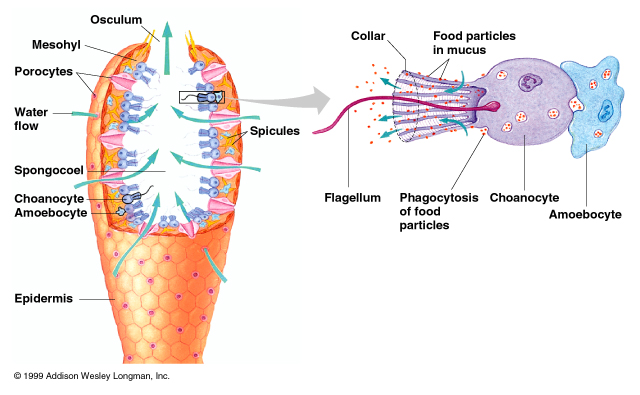About Porifera and they're Life functions
The Phylum Porifera contains sponges, and are very very diverse. They have been speculated to have been here millions of years ago, and could possibly even cure disease. There are about 5000 species known across the planet, and only 150 live in freshwater. These wonderful creatures can give use so many answers, if we just ask the question. Their bodies are made up of cellular-level organization, meaning their cells can do different functions. They also have a system of pores, witch are also called ostia, and canals in witch water passes through. Movement is driven by flagellae, and are on special cells called choanocytes. Their support is a skeleton made up of protein collagens and spicules, and it could also be calcareous or siliceous, but those are from different sponge groups. Their sexuality is both sexual and asexual, the asexual version is external buds. Some sponges have internal buds, called gemmules. Sexual reproduction is at the mesohyl, the male gametes are released into the water and sponges near by take them in through their pores, like when they eat. They absorb food through holes they have, and they filter feed, since they cannot travel or hunt for food.
Ecological role
Their ecological role is to give shelter for fish and other animals. They also filter the ocean, and if they keep dieing then we might lose more then a couple of sponges.
Interesting fact
They are such interesting characters, and monophyletic which means they were all thought to be descended from a common ancestor.
Reference:http://animaldiversity.ummz.umich.edu/site/accounts/information/Porifera.html




No comments:
Post a Comment